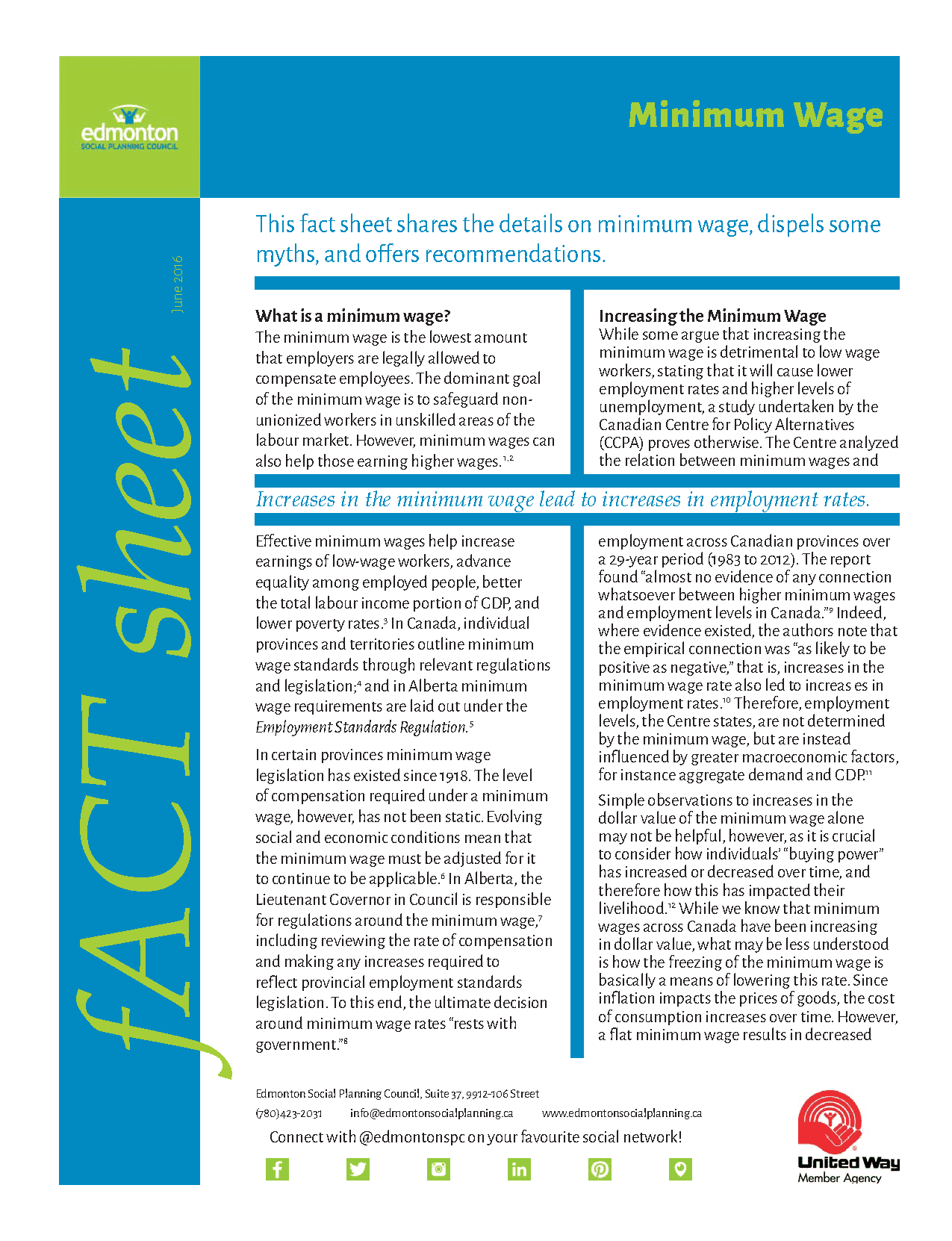June 23, 2016
For Immediate Release
Edmonton’s 2016 living wage calculated to be $16.69 per hour
The Edmonton Social Planning Council estimates that two working adults, caring for two children, would need to each earn $16.69 per hour in 2016 to meet their basic needs.
The living wage is calculated using detailed financial accounting based on actual Edmonton living costs with government transfers added in, and EI and CPP premiums and federal and provincial income taxes deducted.
Edmonton’s living wage dropped by $0.67 per hour in the past year. The decrease is almost entirely due to increases in benefits from the federal and provincial governments.
“Starting in July 2016, this Edmonton family of four will receive an additional $239 per month from the new Canada Child Benefit compared to the previous child benefits plan. This family will also receive an additional $44 per month starting in July from enhancements made to the Alberta Family Employment Tax Credit,” said ESPC Research Coordinator John Kolkman.
While a minimum wage reflects the hourly wage employers must legally pay their employees, a living wage represents the hourly wage needed to maintain a modest standard of living in a specific community.
“With the significant increases in child benefits contributing to a reduced level of living wage, our hope is that more Edmonton employers will rise to the challenge and commit to paying a living wage to all their employees. Research indicates that employers paying a living wage benefit from decreased staff turnover, improved productivity and reduced absenteeism,” noted Kolkman.
The City of Edmonton’s End Poverty in Edmonton report specifically lists advocating for living wages for Edmontonians as a priority. “In the coming year, we plan to work with the City and community partners to recognize employers who provide living wages, and challenge others to do so as well,” Kolkman concluded.
For more information:
John Kolkman, ESPC Research Coordinator
(587)989-4442
jkolkman@edmontonsocialplanning.ca
More than Minimum: Edmonton's Living Wage Report: 2016 Update, and a fACT Sheet on the minimum wage, are available at https://edmontonsocialplanning.ca/.
Information about living wage calculations in other Canadian cities available at: http://www.livingwagecanada.ca/
 What is minimum wage? Who works at minimum wage? What effect does a raise in minimum wage have on employers? Employees? What's up with the magic number of $15/h? And, what's the difference between a living wage and a minimum wage? All this and more in our latest fACT Sheet!
What is minimum wage? Who works at minimum wage? What effect does a raise in minimum wage have on employers? Employees? What's up with the magic number of $15/h? And, what's the difference between a living wage and a minimum wage? All this and more in our latest fACT Sheet!